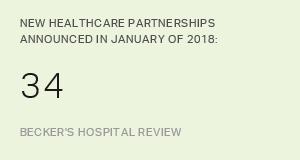Expectations are the milestones we use to measure our progress and, within the workplace, those milestones mark the pathways that guide us toward achievement. If expectations are not clear, we are hesitant, indecisive, and unsure of ourselves.
The importance of properly setting expectations for employees is one of the 12 key discoveries from a multiyear research effort by The Gallup Organization. Our objective was to identify the consistent dimensions of workplaces with high levels of four critical outcomes: employee retention, customer metrics, productivity, and profitability. The research identified 12 dimensions that consistently correlate with these four outcomes --- dimensions Gallup now uses to measure the health of a workplace. An associated research effort, in which Gallup studied more than 80,000 managers, focused on discovering what great managers do to create quality workplaces.
Setting clear expectations is not a new concept for managers. In our attempts to define expectations, however, we often over-operationalize jobs. We put all of the focus on describing the steps to follow, and in doing so, create an environment that communicates, "Check your mind at the door and follow these steps, and you will meet expectations." Turning humans into robots does not build self-worth and self-confidence, and dramatically impairs quality output. When management focuses on defining steps, setting expectations becomes an exercise in controlling employees, rather than guiding different people with different styles toward productive outcomes.
So, how does a manager, who is held accountable for a team's performance, set expectations? The best managers tell us they define the right outcomes first, and then let each person find his or her own route toward those outcomes. This approach resolves the manager's dilemma. It allows the individual to grow via the discovery of his or her "path of least resistance." It appreciates and values differences between employee styles, and lets people capitalize on their strengths to achieve their fullest potential.
This approach also encourages employees to take responsibility. Great managers want each employee to feel a certain amount of pressure to achieve. Defining the right outcomes creates the tension, the thrill, and the pressure of being out there alone, with a very definite target.
Of course, we realize that every job has a certain number of steps associated with it. Some jobs have more of them than do others. The question is, do the steps support a clear perspective on the particular, desired outcomes? Many times, the steps actually obscure the outcome, and the result is mere activity with no broader purpose.
In next week's column, we explore Item 2 of 12: "I have the materials and equipment I need to do my work right."
